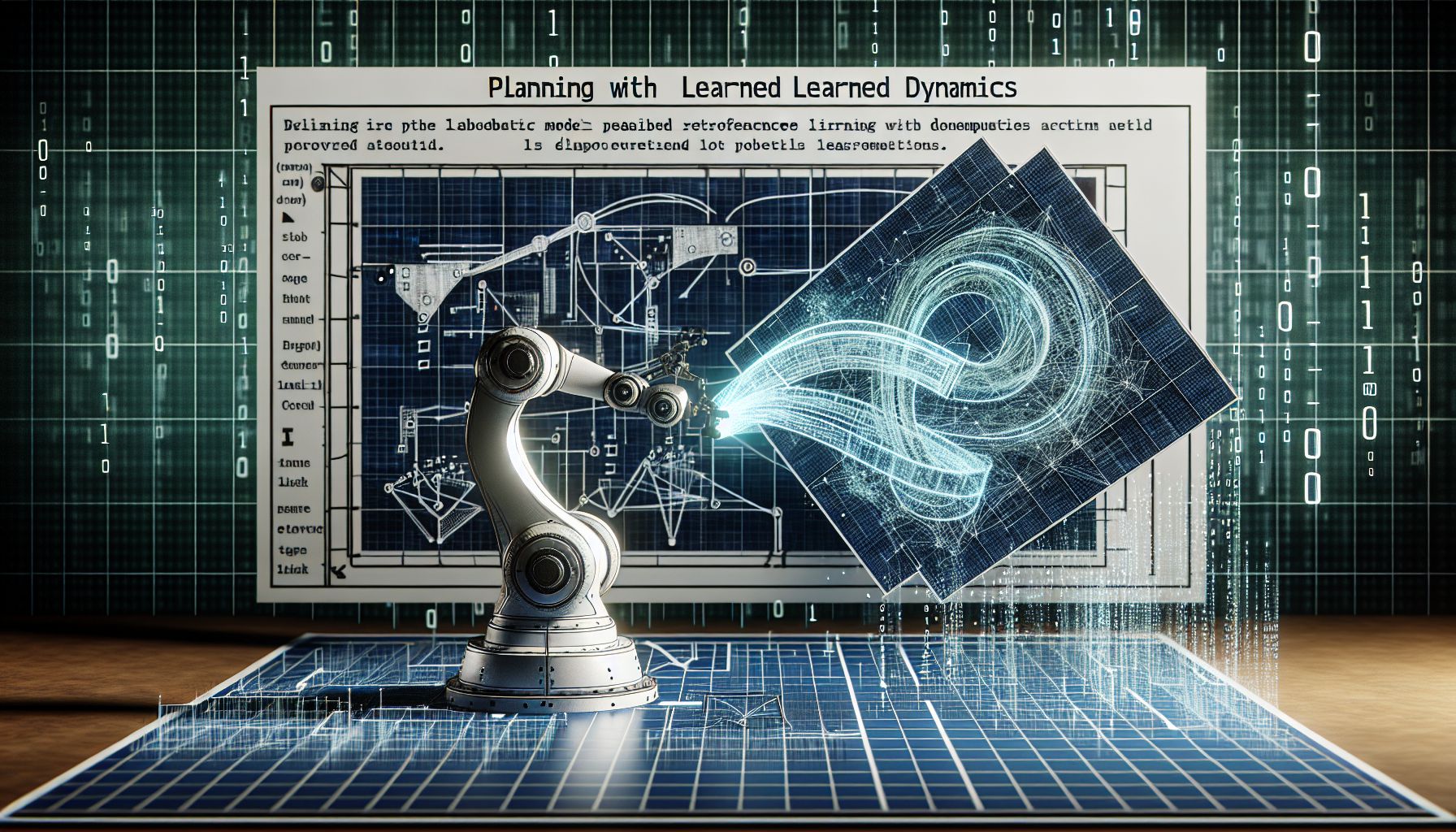📌 Let’s explore the topic in depth and see what insights we can uncover.
⚡ “Imagine a world where AI not only learns, but also predicts and strategizes - welcome to the future of model-based RL. Let’s dive into the game-changing concept of planning with learned dynamics!”
Hello, fellow AI enthusiasts! Today, we’re diving deep into the exciting and ever-evolving world of model-based reinforcement learning (RL). As the AI landscape continues to grow, the importance of efficient and robust planning methods cannot be overstated. Now, imagine if we could not only plan but also learn the dynamics of our environment to make our planning even more effective? Well, that’s exactly what we’re tackling in this post. We’ll be exploring the concept of ‘Planning with Learned Dynamics in Model-Based RL Approaches’ in a way that is not only informative but also fun! So, buckle up and get ready to surf this wave of knowledge with us. 🏄♂️
🚀 Model-Based Reinforcement Learning: A Quick Refresher

"Engineering the Future of Model-Based RL Strategies"
Before we jump into the deep end, let’s start with a quick refresher on what model-based reinforcement learning is. In the vast ocean of RL techniques, model-based RL stands as a robust and efficient approach. While model-free RL approaches learn directly from trial and error, model-based RL takes a more calculated approach. It first learns a model of the environment and then uses this model to plan and make decisions. This makes it a more data-efficient approach compared to its model-free counterparts. However, no approach is perfect and model-based RL is no exception. One major challenge it faces is the ‘model bias’ problem, where inaccurate models can lead to suboptimal policies. But hey, no wave is too big to surf, right? 😎
💡 Planning with Learned Dynamics: The Next Big Wave
Now that we’ve got our basics straight, let’s dive into the crux of our discussion - planning with learned dynamics. The idea is to learn a model of the environment’s dynamics, i.e., how the environment changes in response to the agent’s actions. Once we have this model, we can use it to simulate future states and plan our actions accordingly. This approach gives us the best of both worlds: we can plan our actions like in model-based RL and also adapt to changes in the environment like in model-free RL.
The process of planning with learned dynamics involves two main steps:
**Learning the dynamics model
** 🔍 Interestingly, typically done using supervised learning. We collect a dataset of transitions and then train a model (usually a neural network) to predict the next state given the current state and action.
**Planning with the learned model
** Once we have our dynamics model, we can use it to simulate future states and plan our actions. 🔍 Interestingly, usually done using tree-based search algorithms like Monte Carlo Tree Search (MCTS) or other optimization techniques.
It’s like being able to predict the next big wave 🌊 and then planning your surf accordingly! 🏄♂️
🛠️ Tools and Techniques for Planning with Learned Dynamics
When it comes to planning with learned dynamics, there are several tools and techniques you can use. Here are a few popular ones:
**Probabilistic Models
** These models acknowledge the inherent uncertainty in RL environments and model the dynamics as a probability distribution. Gaussian processes and Bayesian neural networks are commonly used for this purpose.
**Model-Predictive Control (MPC)
** MPC uses the learned dynamics model to simulate a few steps into the future and make decisions based on these simulations. It’s like looking into a crystal ball and making decisions based on what you see!
**Dyna-style Algorithms
** These algorithms integrate model learning, planning, and execution into a unified framework. They alternate between improving the model using real-world interactions and planning with the improved model. Remember, the best tool for you depends on your specific use case and the nature of your RL environment. So, don’t be afraid to try out different tools and techniques until you find the perfect fit. 🛠️
📈 Case Studies: Making Waves with Planning and Learned Dynamics
To give you a better understanding of how planning with learned dynamics can be used in real-world applications, let’s look at a few case studies. *Alphabet’s DeepMind* used a variant of this approach in their AlphaGo and AlphaZero algorithms, which famously beat world champions in the games of Go and Chess. They used a learned dynamics model to simulate future game states and a tree search algorithm to plan their moves. — let’s dive into it. *OpenAI* used a similar approach in their dexterous hand manipulation project, where they used a dynamics model to simulate future hand states and an optimization algorithm to plan the hand’s movements. — let’s dive into it. These case studies show how planning with learned dynamics can lead to state-of-the-art performance in complex tasks. They’re truly making waves in the AI world! 🌊
🧭 Conclusion
As we ride the wave back to the shore, let’s take a moment to reflect on our journey today. We started with a quick refresher on model-based RL and then dove into the concept of planning with learned dynamics. We learned how it combines the planning capabilities of model-based RL with the adaptability of model-free RL, turning them into a powerful tool for tackling complex tasks. We also explored different tools and techniques for planning with learned dynamics and looked at some real-world case studies. These examples showed us how this approach can lead to state-of-the-art performance in complex tasks, proving that no wave is too big to surf with the right approach. As we continue to explore the vast ocean of AI, let’s not forget the importance of planning and learning from our environment. After all, the best way to ride the wave of innovation is to understand the dynamics of the wave itself. Happy surfing! 🏄♂️🌊
📡 The future is unfolding — don’t miss what’s next!
